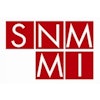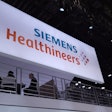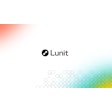Siemens Ultrasound and Acuson Siemens Ultrasound will showcase its Sonoline Antares ultrasound imaging system, which began shipping in July. The first product to be jointly released since the integration of Iselin, NJ-based Siemens Ultrasound and Mountain View, CA-based Acuson, Antares features a compact design (a 24-x-39-inch, 406-lb footprint) with a heavy emphasis on ergonomics.
Antares makes use of technology contributed by Acuson, which Siemens acquired late last year. The companies have merged Acuson's DIMAQ workstation with Siemens' Crescendo multidimensional image processor. The product employs several new technologies, such as maximum information signal acquisition beamformation, which provides a wider simultaneous transducer aperture, according to the company. Antares carries a list price between $150,000 to $230,000, depending on configuration.
Also in the spotlight is the firm's proprietary tissue equalization technology, now available for the Acuson Sequoia ultrasound system and being previewed as a work-in-progress on Sonoline Elegra. Tissue equalization technology, which is applied before the image is formed, sets the correct brightness and gain in two dimensions in soft tissue for any ultrasound exam. The technology also eliminates "over-gaining" -- the saturation of echoes on images during portable exams when the ambient room light cannot be adjusted.
The company will also highlight its new Cadence contrast agent imaging package for general imaging on Sequoia. The bundle includes two new developments in contrast agent imaging: coherent contrast imaging and agent detection imaging (ADI). Coherent pulse formation with precision pulse shaping and single-pulse cancellation is an enabling technology that provides high sensitivity to contrast agent harmonic echoes, while maintaining high frame rates. The ADI technology isolates and separates the contrast echoes from tissue echoes, allowing additional information from the contrast agent to be viewed.
Coherent pulse formation technology controls the transmitted ultrasound waveform to improve image performance. Another example of this technology being previewed at the conference is CHIRP coded excitation, a feature that allows physicians to acquire high-resolution images with greater penetration into the body at higher frequencies.
In addition, the company will be demonstrating its Freestyle compounding technology, which it says expands the effective aperture to provide a compounded extended field-of-view image. Anatomy and pathology are scanned from different lines of sight, thereby improving overall image contrast resolution while maintaining high spatial and detail resolution.
The company's KinetDx digital image management software has been upgraded with the addition of the KinetDx TV (total viewer). This product enables physicians to transfer patient and calculations data from Sequoia to KinetDx DS3000 or WS3000. The company believes this feature will eliminate the time spent writing up worksheets, and thus improve the turnaround time of final reports. The product also makes it possible for physicians to prefetch and view CT and MR images.
The Sonoline Adara system will also be presenting a new face this year. A 3D Express option that features freehand, one-touch data acquisition and allows for real-time 3-D rendering of fetal images will be shown.
Along with the 3-D option, Adara will be demonstrated with an Endo-V 3D real-time 3-D rendering transducer. This mechanically driven transducer reduces the historically troublesome reliance on operator skill in acquiring 3-D images. It will be shown as a work-in-progress.
SonoSite
Ultrasound developer SonoSite of Bothell, WA, will be premiering its handheld SonoSite 180Plus system at this year’s conference. Although released in June of this year, the product will be making its debut to radiologists in Chicago.
The 180Plus scanner features pulsed Doppler and tissue harmonic imaging on both cardiac and abdominal transducers, an M-mode capability, and a 10-second startup time. It is also bundled with a PC direct connectivity application that allows images to be downloaded directly from the system to a PC in bitmap format for basic archiving, review, and printing. Also included is a basic image viewing program, which allows for batch conversion of the images to other file formats such as JPEG or TIFF.
The 5.4-lb unit is being targeted by the company for use in interventional work to guide such procedures as line placements, biopsies, and drainages, in addition to its primary use for portable exams. Price points for 180Plus range from $25,000 to $30,000, depending on configuration.
Toshiba America Medical Systems
Multimodality manufacturer Toshiba will saddle up two new products in its ultrasound stable. The Nemio line of ultrasound systems that debuted in May of this year will be demonstrated, and the company will offer a pre-510(k) clearance peek at its newest thoroughbred system, called Aplio.
The Tustin, CA, firm is targeting the Nemio 10, 20, and 30 models at private-practice physicians or medical clinics. Nemio 10 is a 64-channel gray-scale system that can be upgraded to a 256-channel color scanner.
The 128-channel Nemio 20, designed primarily for doctors’ offices, hospital units, and operating rooms, has the added feature of color Doppler capabilities, according to the firm. Both the 10 and 20 models include ports for linear and convex probes.
Nemio 30 adds continuous-wave Doppler and phased-array probe capabilities. It includes the same linear and convex probe ports as the 10 and 20 models, and also incorporates a third port for the use of a transesophageal probe, as well as a separate port for a pencil probe.
Options such as 3-D Fetal Face and Fusion 3-D are available for the 20 and 30 models, as well as a telemedicine option that permits real-time viewing of remote scanning. All Nemio software is based on the Microsoft Windows operating system.
The firm will also be unveiling its latest entry into the high-end ultrasound marketplace, Aplio. The design of the system was driven by customer input to ensure system functionality and ergonomics, and reflects the way sonographers work to simplify and streamline workflow, according to the company.
The system comes with Fusion 3-D, which gives clinicians a 3-D display of blood flow with the corresponding tissue image; Dynamic Flow; and compound image optimization technology. Aplio is awaiting FDA 510(k) clearance, and a price point for the system has yet to be determined, according to Toshiba.
Go to page:
Analogic through Philips
By Jonathan S. Batchelor
AuntMinnie.com staff writer
November 14, 2001
Copyright © 2001 AuntMinnie.com



















